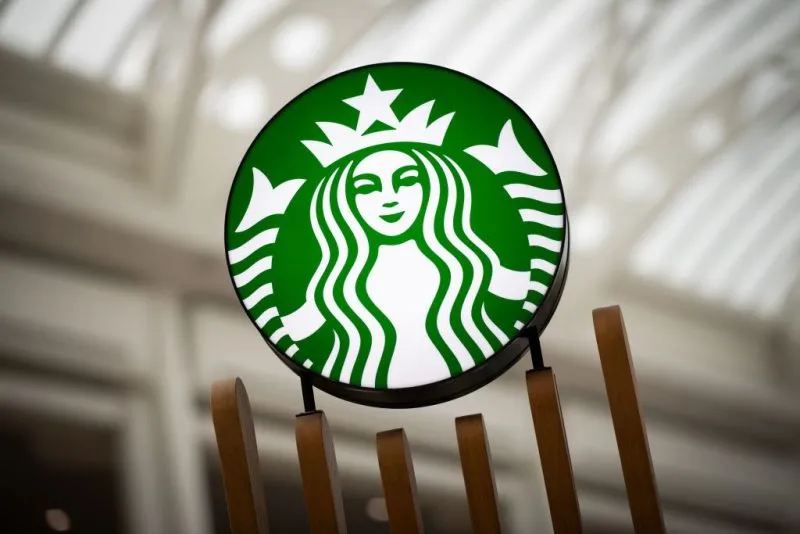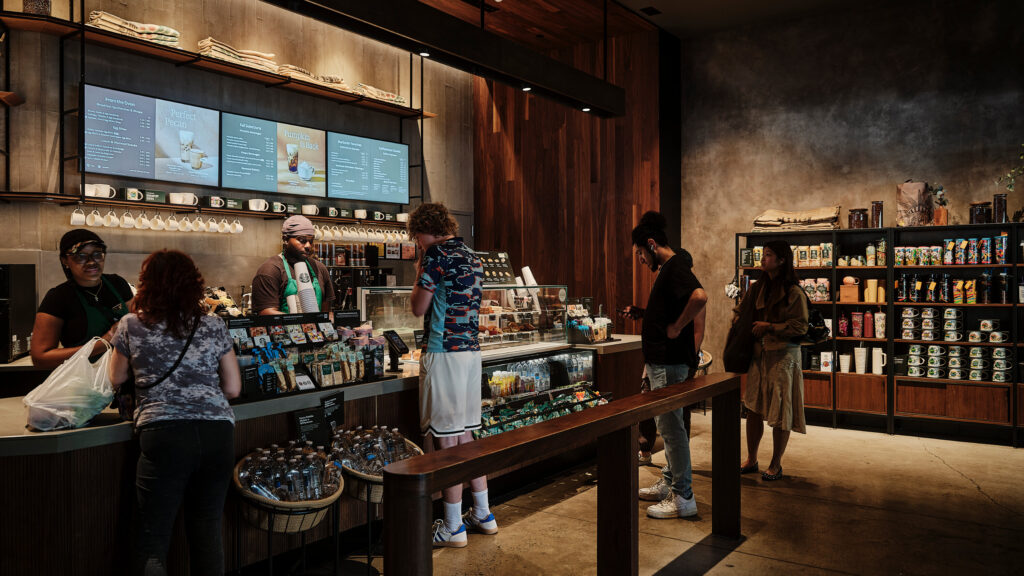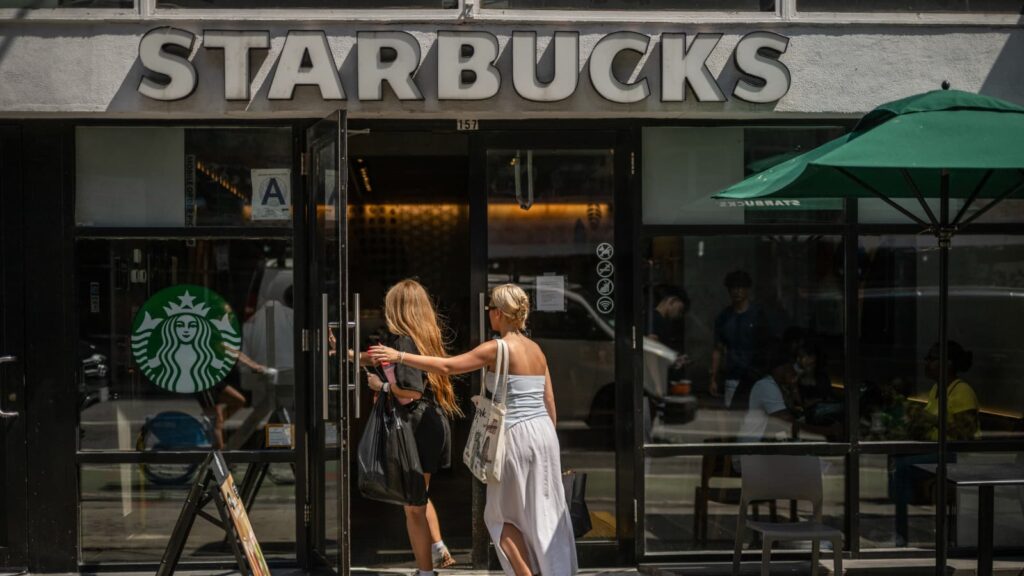“For many, Starbucks is more than just coffee—it’s part of their daily routine. But now, 900 employees are facing layoffs as the company shutters stores across North America.”
For millions, Starbucks isn’t just a coffee shop—it’s part of their daily rhythm. From quick morning stops before work to long evenings spent studying over lattes, the brand has become a familiar presence in countless communities. But now, Starbucks is delivering news that feels more bitter than sweet. The company has announced it will lay off 900 employees and close stores across the U.S. and Canada, a move that’s sending shockwaves through both its workforce and loyal customers.

This decision isn’t just about numbers on a balance sheet—it’s about the people who greet us at the counter, craft our favorite drinks, and make Starbucks more than just a place for coffee. The closures and job cuts highlight the challenges even big brands face in an evolving economy—and the ripple effects will be felt far beyond the stores themselves.
What Starbucks Announced
In its latest update, Starbucks announced layoffs affecting 900 employees and the closure of several stores across the U.S. and Canada. The company described the move as part of a “strategic realignment,” aimed at reshaping operations to fit changing customer behaviors and rising business costs.
For many workers, the news came as a shock. These are the same employees who kept stores running during the pandemic, who learned customers’ names and orders by heart, and who helped make Starbucks a household name. Now, they find themselves caught in a wave of corporate restructuring.
The Starbucks store closures in the US and Canada won’t just affect employees—they’ll also reshape neighborhoods. In some communities, Starbucks isn’t only a place to grab a latte; it’s a gathering spot, a study hub, or even the unofficial “third place” between home and work. Losing that space changes the daily rhythm for both workers and customers alike.
Why Starbucks Is Making These Cuts
So, why is a coffee giant as recognizable as Starbucks scaling back? According to the company, the decision to lay off 900 employees and close stores in the U.S. and Canada is tied to shifting customer habits, rising costs, and the need to rethink how its stores operate.
More people are grabbing coffee through drive-thrus or ordering ahead on mobile apps instead of lingering in cafés. This change has left some stores busier than ever while others struggle to keep up. At the same time, higher wages, supply chain pressures, and increased rent costs have added weight to Starbucks’ balance sheet.
In short, Starbucks isn’t collapsing—it’s recalibrating. By closing underperforming stores and reducing staff, the company hopes to stay competitive in a coffee market that’s changing faster than ever. But while these moves may make sense on paper, the human cost is much harder to measure. For the baristas and communities directly affected, the reasons behind the cuts don’t make the news any easier to swallow.
Impact on Employees and Communities
Behind every cup of coffee is a person—someone who knows how you like your latte or who brightens your morning with a smile at the counter. That’s why these job cuts hit so hard. For the 900 Starbucks employees affected, it’s not just about losing a paycheck. It’s about losing a community, daily connections, and in many cases, a sense of stability.
The closures will also leave a noticeable gap in neighborhoods. In many towns, Starbucks has become more than a coffee shop—it’s a safe spot for students to study, a meeting place for friends, and even a quiet corner for remote workers. The Starbucks community impact goes well beyond the brand’s green logo. When a store shuts its doors, the rhythm of daily life changes for both employees and customers who have built routines around it.

These layoffs serve as a reminder that corporate decisions, while often explained in business terms, ripple through real lives and local communities in ways spreadsheets can’t capture.
Reactions to the Layoffs and Closures
The announcement of Starbucks layoffs and store closures has stirred up strong emotions among both workers and customers. For many employees, the news felt like a punch in the gut. Some baristas shared online that they learned about the cuts with little warning, while others expressed fear about finding new jobs in an already competitive market.
Unions and worker advocates have also weighed in, criticizing the decision and calling for greater transparency from the company. They argue that while Starbucks continues to grow its brand and innovate with new products, the people on the front lines—the ones making the drinks and connecting with customers—are the ones paying the price.
Customers, too, are reacting. Many have voiced sadness over losing their neighborhood Starbucks, not just because of the coffee, but because of the relationships built there. For them, these closures feel like the loss of a familiar, welcoming space in their daily lives.

The reactions make one thing clear: while Starbucks may see this as a business adjustment, the human impact is far more complex and deeply felt.
The Bigger Picture for the Coffee Industry
Starbucks isn’t the only coffee giant feeling the pressure. Across the industry, cafés and chains are navigating the same storm: changing consumer habits, higher costs, and shifting expectations. Customers want convenience—mobile ordering, delivery, and drive-thru service—but they also want cozy spaces to sit and stay awhile. Balancing both hasn’t been easy.
Independent coffee shops are facing similar challenges. Rising rents, inflation, and labor costs mean that even local cafés are struggling to keep the doors open. For many, the story of Starbucks reflects a larger truth: the coffee industry is in a period of transition.
At its core, this is about more than just coffee. It’s about how people connect, where they gather, and what role cafés play in everyday life. The changes at Starbucks shine a light on how the entire industry may need to adapt—finding new ways to serve customers while keeping that sense of community alive.
FAQs
1. Why is Starbucks laying off 900 employees?
Starbucks explained that the layoffs are part of a “strategic realignment” to adapt to changing customer habits, rising costs, and underperforming store locations.
2. Which Starbucks stores are closing in the U.S. and Canada?
The company hasn’t shared a full public list yet, but closures are expected to target underperforming stores in both the U.S. and Canada, particularly in areas where customer traffic has shifted.
3. How will the Starbucks layoffs affect employees?
About 900 Starbucks employees will lose their jobs. While the company may offer some internal transfers, many workers will face uncertainty as they look for new opportunities.
4. What does this mean for Starbucks customers?
Some customers may see their neighborhood store close, while others might notice changes in staffing and service. However, Starbucks has emphasized its focus on drive-thru and mobile orders, so convenience may increase in some areas.5. Is Starbucks in financial trouble?
Starbucks is not collapsing financially. Instead, it is restructuring to stay competitive in a changing coffee market. The closures and job cuts are designed to streamline operations and focus on profitable growth.